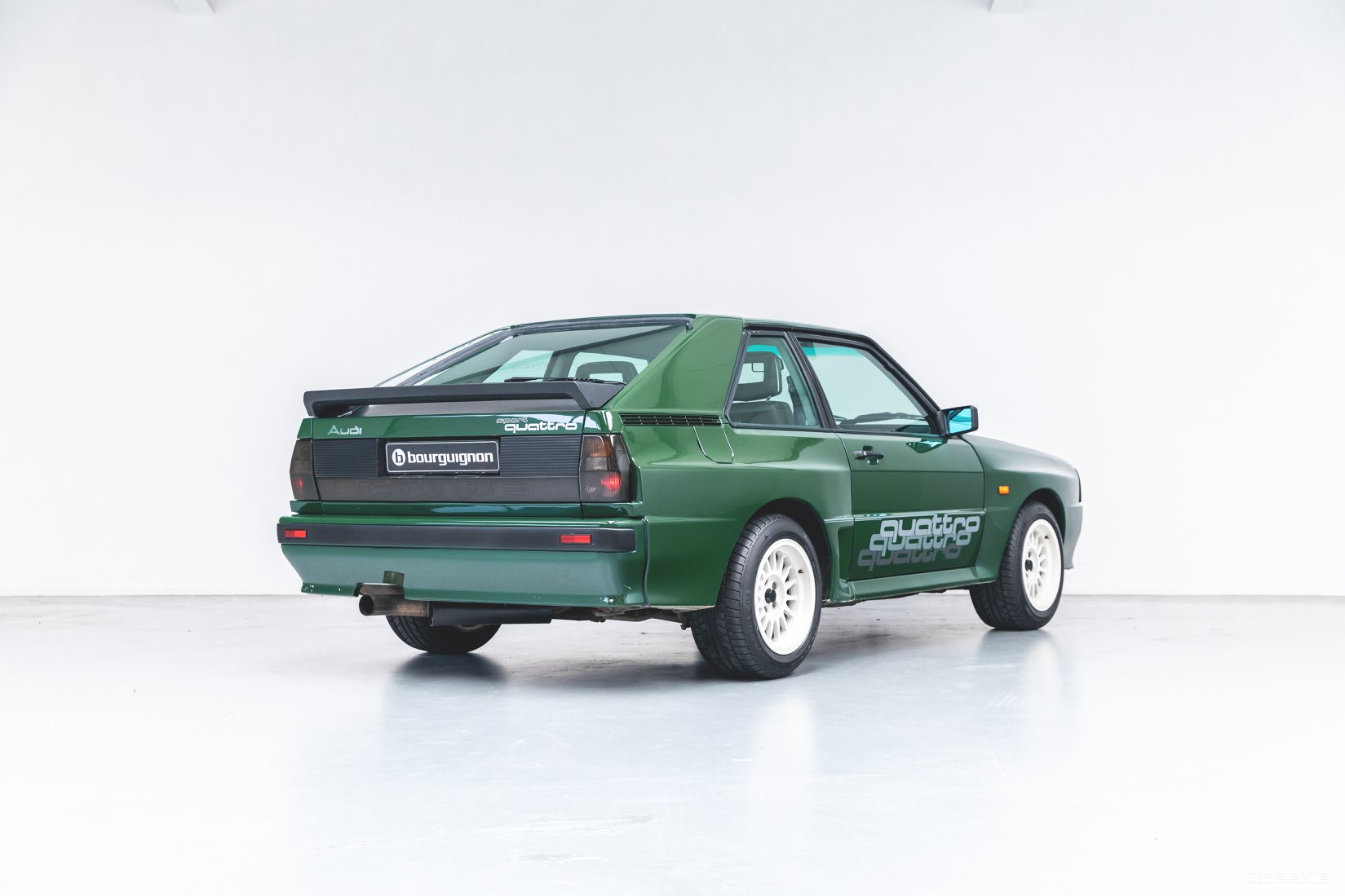
By 1984 the writing was on the wall, and the wild formula called Group B was mutating cars as if they had been supplied nuclear-tainted drinking water. Lancia went from the nutty but awesome and pretty 037 to the much nuttier, much less pretty but significantly faster Delta S4; a mid-engined turbocharged and supercharged all-wheel drive wonder. That matched Peugeot’s effort with the 205 Turbo 16, a mid-engined turbocharged and super-balanced all-wheel drive hatch. The competition was lighter and much better balanced than the Audi was, and all-wheel drive was no longer the trump card. The Audis had been fast but also a bit prone to understeer – something that won’t surprise anyone who has driven a 1980s Audi. Additionally, they were heavy compared to the competition even when fitted with special aluminum blocks instead of the road-going cast iron. One last complaint that the drivers had was that the windshield rake meant there was a tendency to have a large amount of glare that distracted the driver and navigators. Plus, Audi was at the limit of what it could develop reliably with the 10 valve turbo motor.
The response was the Sport. To drop weight, Audi chopped the best part of 13 inches out of the middle of the Quattro, making it a two-seater unless your passengers had no legs. They took the doors from the short-lived 4000/80 5+5 2-door and the windshield from the 4000/80, too – it was much more upright than the normal Coupe. The flares grew as well, another few inches in girth allowing now 9″ wide wheels with larger 235-45-15 tires. The body was made from carbon fiber and kevlar to help cut weight and was produced by noted special vehicle producer Baur in Stuttgart. And under the vented hood lay what would become the party piece; the 2.1 turbo motor now sporting 20 valves. The result was staggering in terms of road performance; in 1984, the Sport was the fastest accelerating road car you could buy to 60 m.p.h. at 4.5 seconds. Remarkably, 30 years on that would still be considered seriously fast. But it was the belching flames, the wail of the five cylinder and the wild slides that captured the imagination of the world. In rally trim, Audi saw a reported 600 horsepower from the monstrous S1 E2 depending on spec. On the road the Sport only saw half that output, but it also received a special interior to match the special exterior – heavily bolstered Recaro seats in special trim and a significantly revised dashboard with more gauges and a new readout. 214 of these special Quattros made it to the road at a somewhat staggering equivalent of $72,000 in 1984 – nearly double what the already expensive long-wheel base Quattro cost. As with all of the special homologation cars from Group B, the Sport was a truly special car then and is perhaps even more revered now:
CLICK FOR DETAILS: 1985 Audi Sport Quattro at Bourguignon Classics

Year: 1985
Model: Sport Quattro
VIN: NA
Engine: 2.1 liter turbocharged inline-5
Transmission: 5-speed manual
Mileage: 75,695 km (47,035 mi)
Location: Leeuwarden, Netherlands
Price: POA
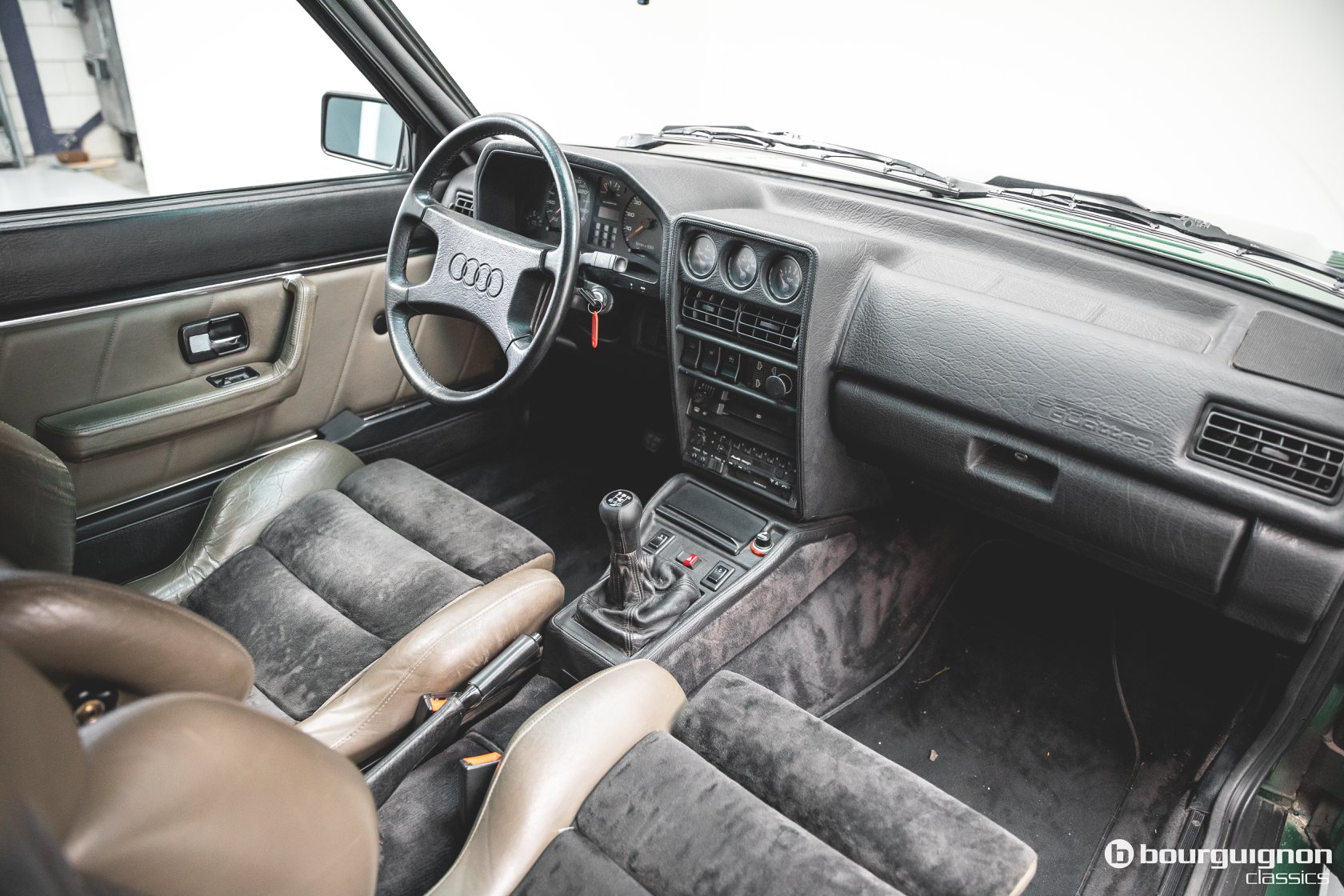
For sale: unrestored Malachitgrün Audi Sport quattro with 75,695 kilometers!
This Sport quattro was a factory car. Legend Walter Röhrl drove this specific Sport quattro a couple of times. After the factory sold the Audi, it came to Italy. In total it had 3 owners.
This example is never restored. It needs some work to make it perfect again.
By interest, contact us by mail;
? ramon@bourguignon.nl
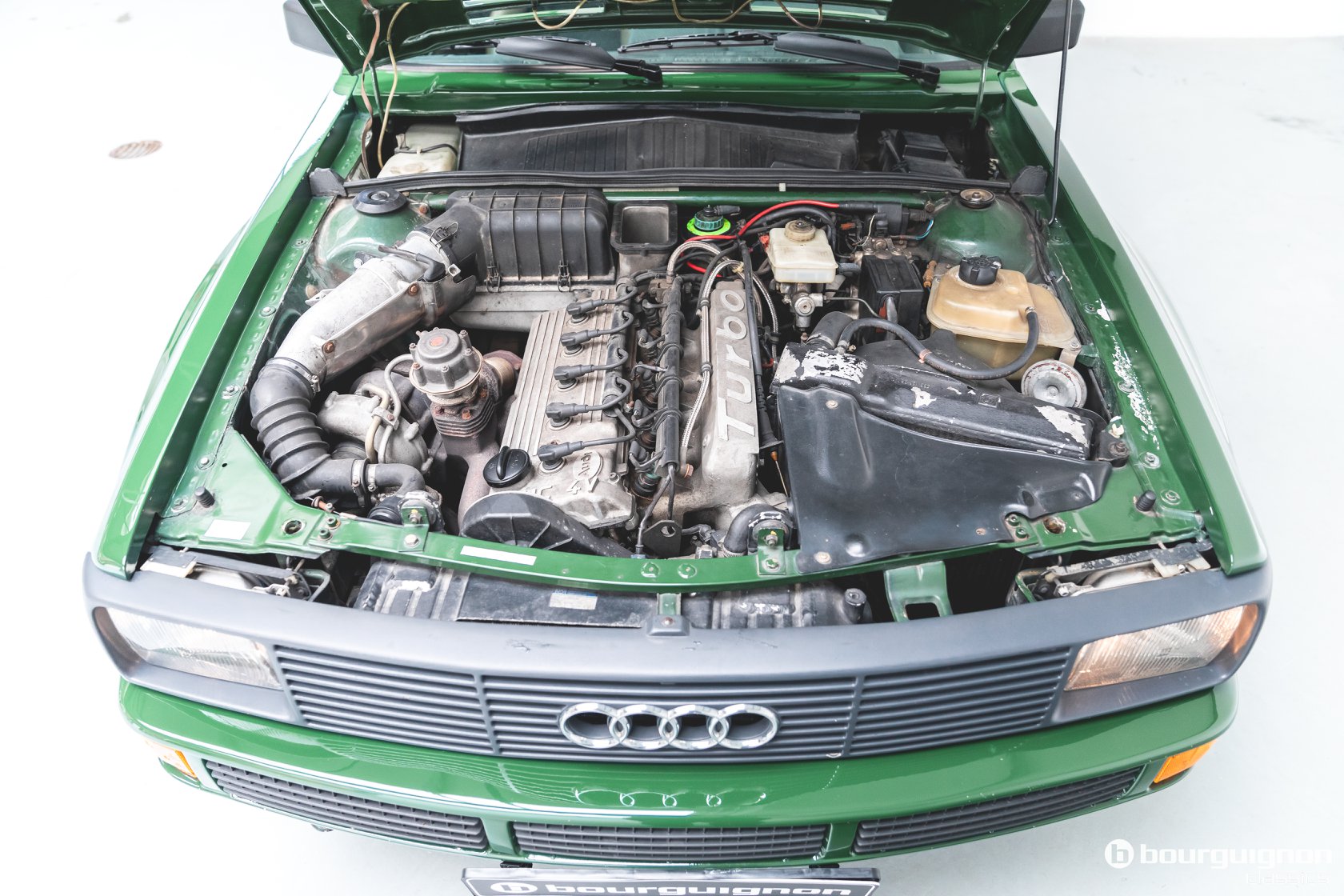
Sports only came in five colors; Tornado Red and Alpine White that most are pretty familiar with as they made up the bulk of the production with 128 and 48, respectively. Then there are the rarely seen colors; Audi made 21 Copenhagen Blue examples, 2 Black, and the final 15 were LY6A Malachite Green. Rare beasts in their own right, this car is even more rare as it appears documented to be mostly original and driven by Walter Röhrl. I don’t recall seeing the ghosted ‘quattro’ decals previously, but as they appear in the period photo of Röhrl they seem to be original. Throughout the car is simply gorgeous, even with imperfect patina – that if anything makes it a bit more authentic.
Malachite has definitely become the ‘hot’ color on what is certainly a hot car in the market right now. Gooding sold a Tornado Red one this year for $434,000, while an Alpine White example traded just over $400,000 back in 2015. Sufficed to say, you’ll need to have at least the best part of a half million dollars to park this legend in your driveway. No matter where you go, it will draw an appreciating crowd. Dynamically, it was not a great driving car. At least in my eyes, it was not a pretty car compared to the original – neat, but also a bit odd in proportion especially from the side. Historically, it was not hugely successful – the Sport only scored two wins before the end of Group B. But arguably, this is the most desirable Audi ever produced and still captures the imagination of rally fans who still dream of the haunting, raucous screams of the fire-breathing monsters Group B produced. The Sport Quattro may not have been the ultimate fastest rally car, but it always appeared to be – perhaps, from a publicity standpoint, more important than actual wins. Simply put, this is the car that enthusiasts want to see.
-Carter



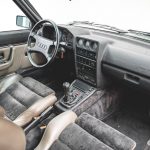

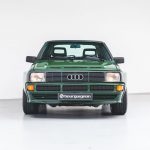

Thanks Carter! Love it! I am one of those people who imagines the success of these cars and likes the wrong proportions. Somehow this is the epitome of vorsprung durch technik in my mind, even if it wasn’t actually.
And speaking of the 5+5, I still dream of a “5+5” two door Quattro.
4.5 seconds to 60 in 1984 in a production car. Just crazy. Faster to 60 than any exotic at the time. This (and the UrQ) is what I discovered as a little kid sometime around 1985 when I was going through the usual car mags. My dad just picked up a 5000 turbo, and I was curious to learn more about what this Audi company was all about. Then I discovered the UrQ and SQ. My fate was sealed.
There is total beauty in this car, like Eastern-block Brutalist architecture. That menacing front end, the 3 quarters view from behind, flares everywhere.
Didn’t notice this before with SQs, no AC.
Finally an article that acknowledges that these cars weren’t very successful in competition. They always seem to be surrounded by the halo of Audi’s earlier rally successes, but those all came with the long-wheelbase car. The main problem with the Sport Quattro was that as the competition all switched to tube-frame specials, the Audi was stuck with a standard production-car unibody. The only legitimate win it had was at San Remo in 1985 where Rohrl beat the Peugeots straight up in a reversal of the usual outcome. The other of the 2 wins was in the Ivory Coast, which the other factory teams skipped.
Yes, the Lancia 037 really out-performed the UrQ and SQ, even with only being RWD. But the 037 only won the constructor’s championship in 1983. And it came out later that the car cheated in that they didn’t build the full 200 required for homologation, and serious shortcuts were made in its construction, where Jeremy Clarkson compared the rollcage to as sturdy as cardboard. Jermey also has a hilarious story on how they fooled the FIA to thinking they made 200 of them: “It lied about how many cars were homologated to the road, lied about the construction of its roll cages (which actually made the 037 a death trap for driver if they crashed)”. Look up the Grand Tour video, it is pretty entertaining (if you can get by Jeremy Clarkson’s annoying prick-smug attitude on everything):
https://www.quattrodaily.com/grand-tour-looks-history-audi-vs-lancia-rally/
So…..being an Audi fanboy, I am going to say that Audi lost to a bunch of cheating Italians.
Audi only used the long-wheelbase Quattro in 1983 and lost the constructors championship to the 037 because of unreliability.
The Sport Quattro did not debut until partway through the following season. Its main rival was the Peugeot 205 T16, which dominated the second half of 1984, as well as 1985 and 1986, after which the category was outlawed.